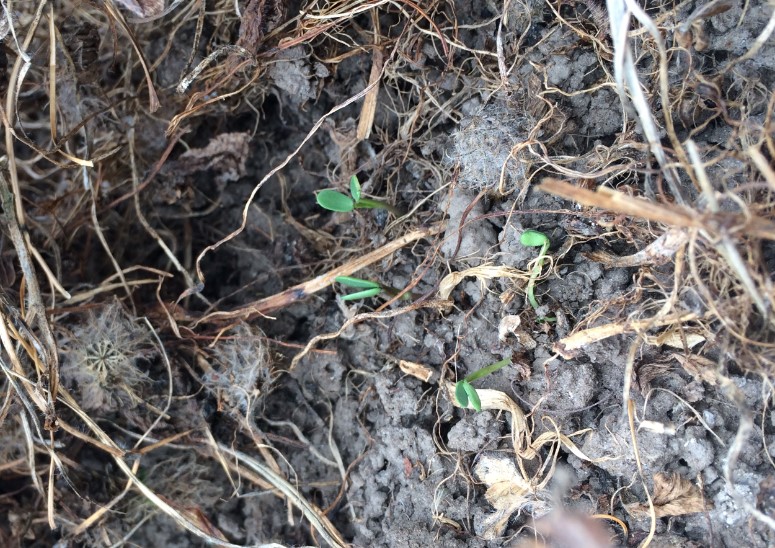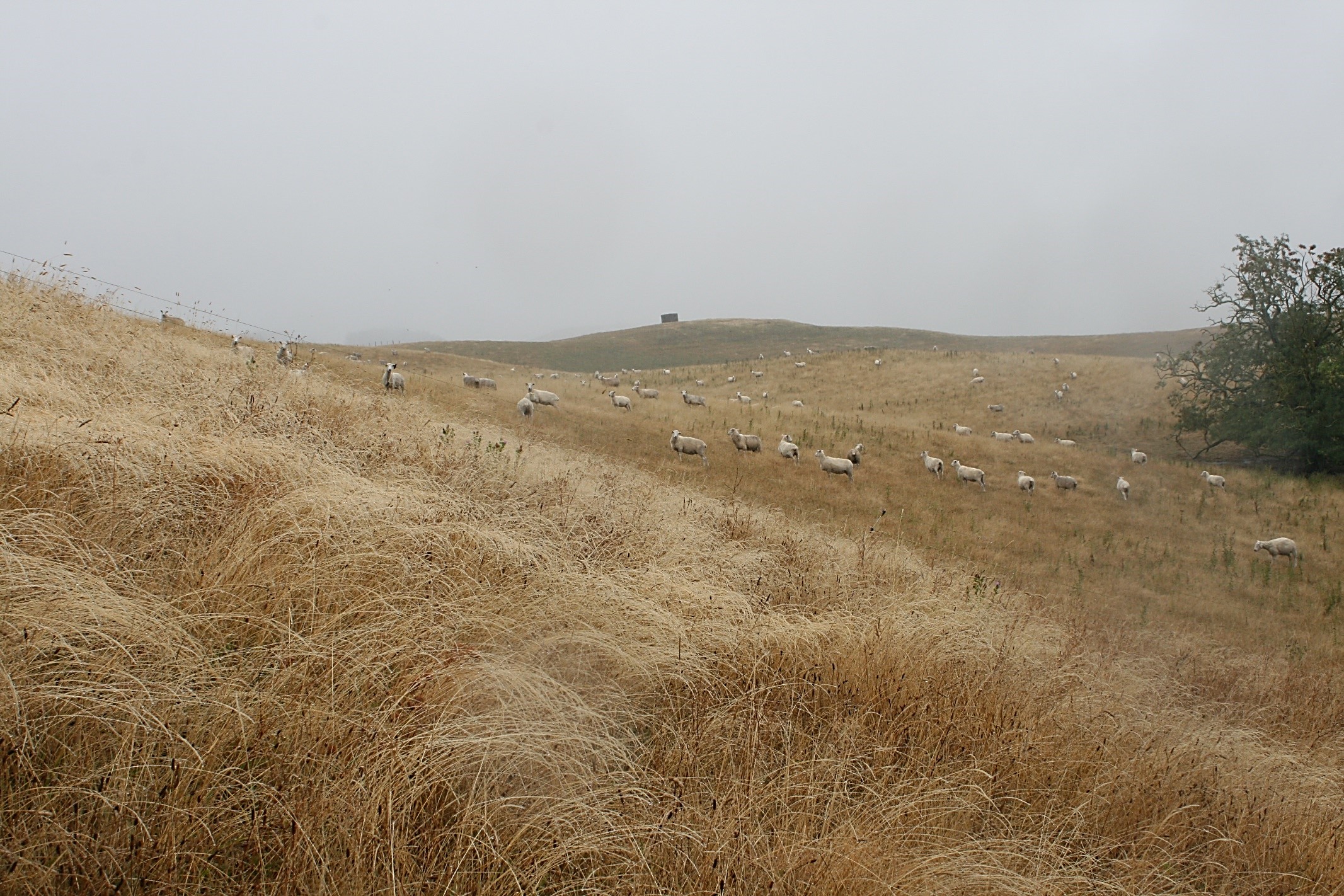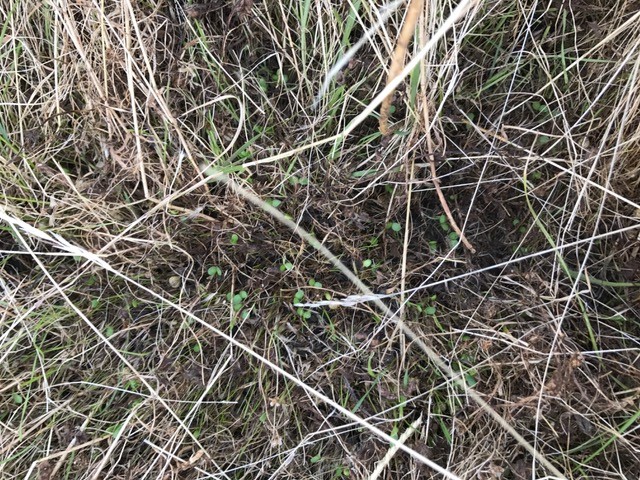Want sub clover for your lactating ewes in spring? Plan for it now.
For those of you wanting to sow sub clover this autumn, here is some advice to get you started.
Why sub clover?
- Sub clover seed costs about $120-$150/ha plus drilling costs.
- The sub clover may provide 2-4 t DM/ha in a mixed pasture during spring = about $0.05/kg of high quality dry matter for lactating ewes.
- The nitrogen fixed alone will cover the seed cost: 50 – 100 kg N/ha fixed by the sub clover.
Drillable hill country with low legume pastures
- For drillable hill country with pastures that have “run-out” in the drought or have low legumes the most limiting nutrient is nitrogen. Those pastures will not respond much in the spring so getting some legume into them is important.
Between now and the end of March:
- graze the pastures with ewes or cattle to remove excess tag and open up bare ground,
- then drill 10 kg /ha of sub clover (e.g. 3 kg ‘Antas’ + 3 kg ‘Narrikup’ + 4 kg ‘Denmark’) to provide an opportunity for seed to strike this autumn to provide quality feed in spring.
- If you cannot get the cultivars named from your preferred supplier try to use at least two cultivars 5 kg of each with a mid-season and late season flowering date. Some examples of flowering date are given below with hardseededness rating in brackets (1 = low, 5 = high):
- Early season flowering: ‘Bindoon’ (3), ‘Monti’ (2)
- Mid-season flowering: ‘Campeda’ (5), ‘Coolamon’ (5), ‘Narrikup’ (3), ‘Woogenellup’ (1)
- Late season flowering: ‘Antas’ (3), ‘Denmark’ (2), ‘Karridale’ (2), ‘Napier’ (5), ‘Rosabrook’ (5)
- Very late: ‘Leura’ (2)
Where possible avoid having two cultivars with hardseededness ratings of 3 or higher. In New Zealand our most successful cultivars have been soft seeded ones e.g. ‘Woogenellup’. Note: ‘Tallarook’ and ‘Mt Barker’ are soft seeded varieties that were successful in the past but unfortunately their seed is no longer available.
If you want to include a grass use 2 kg/ha of cocksfoot.
Suggested cultivar mixtures for the following environmental conditions are:
- 5-6 month summer dry – ‘Woogenellup’ plus ‘Narrikup’ or ‘Antas’ and/or ‘Campeda’ or ‘Bindoon’
- 4-5 month dry – ‘Denmark’ plus ‘Narrikup’ or ‘Coolamon’ for sites which normally get dry in mid-November but can dry out in late October or stay green until early December.
- 3-4 month dry – ‘Leura’ plus ‘Denmark’ with ‘Rosabrook’ or ‘Coolamon’ or ‘Narrikup’ for higher rainfall areas which dry out later than mid-December in an average year.
- 2-3 month dry – ‘Denmark’ plus ‘Leura’ or ‘Rosabrook’ + white clover.
- Poorly drained sites with wet soils in winter/early spring – use ‘Napier’ or ‘Monti’ plus ‘Woogenellup’ or ‘Denmark’ depending on average length of dry season. Balansa clover is also good on winter-wet sites and could be added to the mix at 3 kg/ha.
- Early spring feed with high rates of winter growth – use ‘Antas’ and/or ‘Woogenellup’ plus ‘Denmark’.
- If ‘Leura’ is unavailable try one of the hardseeded newer cultivars such as ‘Narrikup’ or ‘Coolamon’ but insist on the inclusion of a soft seeded cultivar such as ‘Denmark’ or ‘Woogenellup’ as at least a third of the sub clover mix.

Plate 1. After a rainfall of 24 mm on 08/02/17 ‘Antas’ sub clover seedlings emerged at Poukawa Research Station, Hawkes Bay. Note the large burrs that are still obvious from last season’s plants. (Photo: Carmen Teixeira, 17/2/17).
Non-drillable hill country
If you are intending to oversow non-drillable hill areas then they should also be hard grazed now with ewes or cattle to remove any tag and ensure oversown sub clover seeds have an opportunity to reach the ground and seedlings that strike in autumn can grow when rains arrive.

Plate 2. Sheep grazing in the Hawkes Bay. That’s a lot of tag! (Photo: Carmen Teixeira, 17/2/17).
An option is to oversow 10 kg/ha of the above mixes after you have cleaned out the tag. Then once rain comes put cattle in to keep control of the grass as the new seedlings emerge and you can see 2-3 new leaves – then they handle a bit of pulling. Ewes will target the sub clover plants, cattle less so.
No guarantee of success if we get rain and then a dry period but this is our best chance. Some litter on the ground can help retain moisture so you don’t need concrete hard completely bare ground.

Plate 3. Sub clover seedlings in a Wairarapa pasture in February this year after a rainfall of 38 mm (Photo: Dan Nicholson 21/2/17).
When the rain comes this autumn
Sub clover germination is triggered by a significant rainfall event >20 mm during the autumn. Germination will happen quickly and small established plants will be visible after a week or so. Maintain control of the resident grasses preferably with cattle to ensure sub thrives.
Management in the spring… Another blog article will outline how to manage your new sub clover pasture in spring will be posted closer to the time.
Sub clover guide
A reminder that the Sub clover guide can be downloaded from the ‘Sub 4 Spring’ website and contains a section on sub clover establishment which includes information about cultivar selection, sub clover mixtures, site preparation, sowing time and rates and much, much more!
